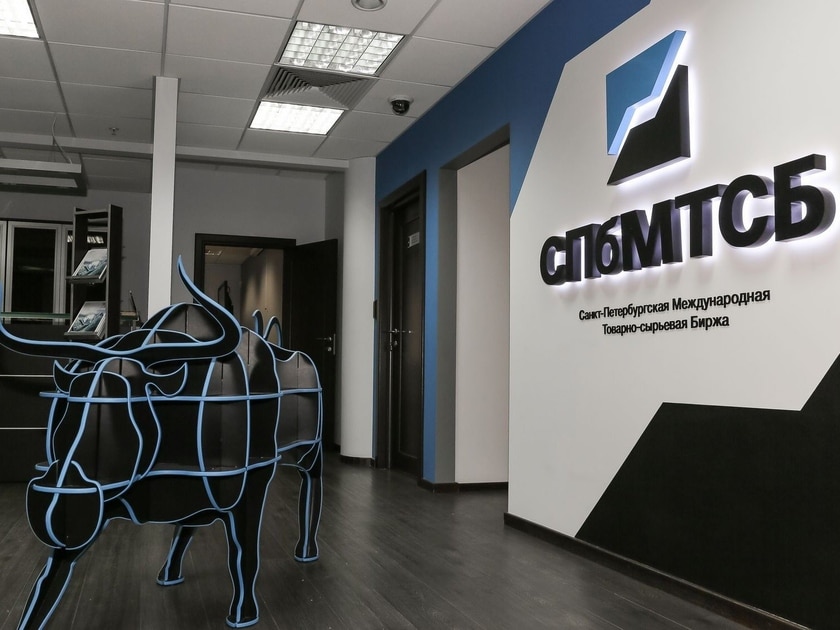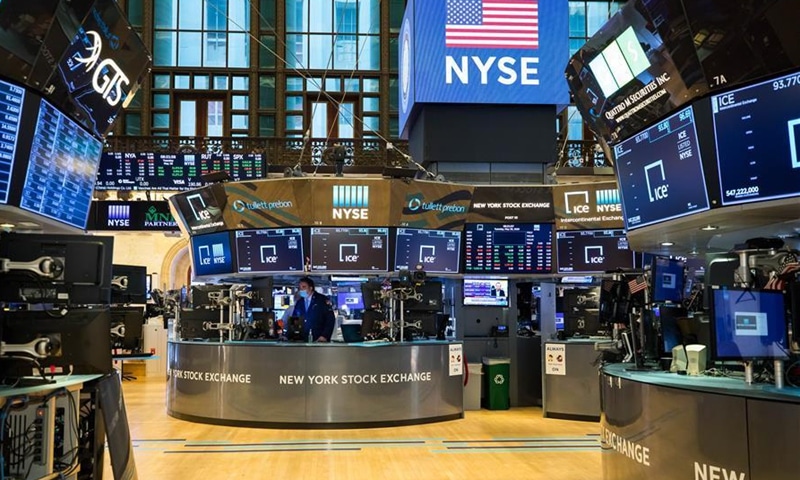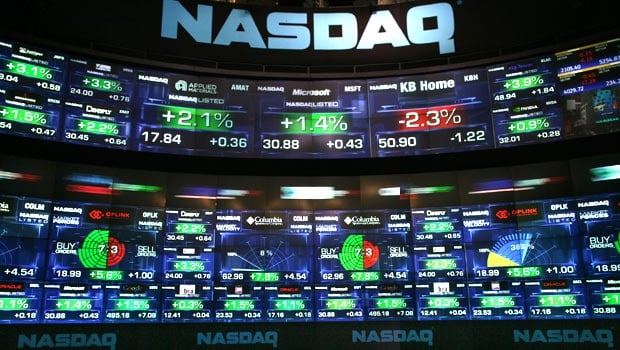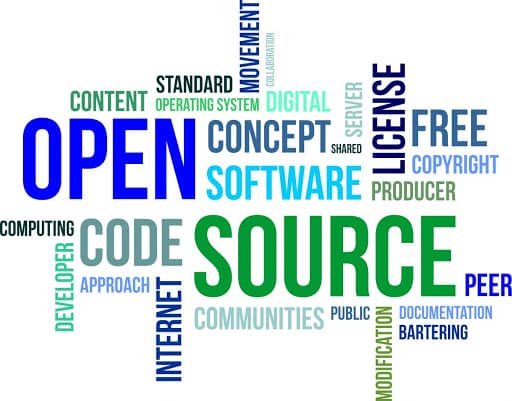Transactions made by investors and traders with assets take place on official platforms – exchanges. The most famous of them are NASDAQ, New York, London, Frankfurt. In Russia, there are two main platforms for investors – Moscow and St. Petersburg. The Moscow Exchange has its own characteristics, and the functionality of its website will be useful for any investor to obtain both basic knowledge and detailed information necessary for the selection and analysis of securities. Knowing how the exchange works also clarifies some of the features when an investor interacts with
a broker – more on this in the article.

- What is an exchange and how does it work?
- Moscow exchange commission
- Moscow exchange today – exchange order of trading and settlements on transactions
- What assets are represented on the Moscow Exchange – we analyze the market of the Moscow Exchange
- Schedule of the Moscow Exchange 2021-2022
- Non-working days of the Moscow Exchange in 2021 and 2022
- When stocks, mutual funds / ETFs and bonds are traded on the Moscow Exchange
- When and how futures are traded on the Moscow Exchange
- Moscow Exchange website and trading on the online platform
- Demo account “My Portfolio”
- Best Private Investor on Moex
- Training on the website of the Moscow Exchange
- Information on assets on the Moscow Exchange website
- Currencies, the dollar exchange rate and the euro exchange rate online within the framework of the Moscow Exchange
- Shares on the Moscow exchange
- Bonds
- Futures
- Mutual Funds and Strategies
What is an exchange and how does it work?
Exchanges provide a meeting of orders for the purchase and sale of securities and other assets. They organize auctions according to the rules they set. If earlier transactions were made live, and even 50 years ago brokers shouted out the price or submitted notes with their price, today this process is automated. 
Today, the order book is the window through which you can look and see what is happening on the side of the trade organizer.
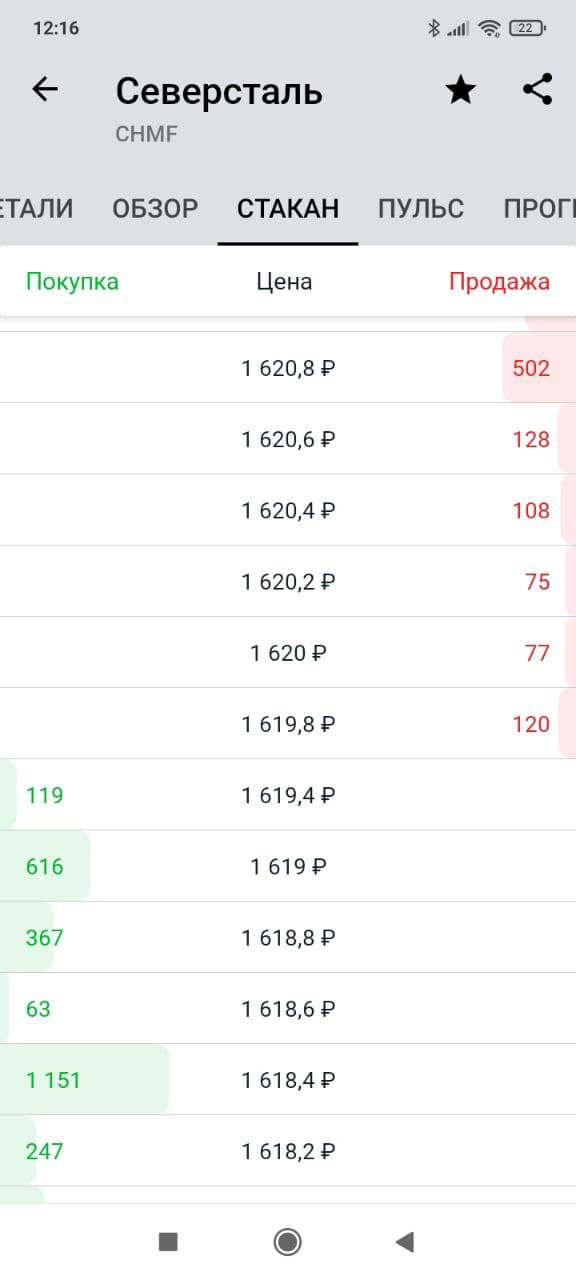
Individuals submit applications, and brokers submit applications to the exchange. That is why in the dialogue between the investor and the support of the broker regarding, for example, an unexecuted, rejected order or the suspension of trading, it is the organizers of the auction that often act as the “extreme”. The course of trading and control over the course of trading is indeed the responsibility of the exchange. Trades are organized in accordance with the exchange regulations. Brokers, with whom clients interact most of the time, are intermediaries between the client and the exchange.
Moscow exchange commission
A commission is charged from any transaction made on the exchange market. The end user may not know about it if it is included in a single commission at the broker’s tariff (together with the commission of the clearing center and brokerage). For individual brokers, you can see exactly the exchange fee in the brokerage report. For example, in the Tinkoff brokerage report, it is in the section with information about transactions opposite the transaction in the “Exchange commission” column. At Tinkoff, the exchange commission is included in the general tariff commission, so the brokerage report is the only way to find out exactly what part of the amount is taken by the trading organizer. 
Moscow exchange today – exchange order of trading and settlements on transactions
Although the clearing center is a separate organization, the National Clearing Center (NCC MFB), which settles transactions, is wholly owned by the Moscow Stock Exchange. Settlements for deals in shares are made on the second business day (T+2 trading mode), for deals in bonds on the next (T+1) or on the same day. Futures Clearing
takes place twice a day. Currency calculations depend on TOD (current day) or TOM (next day) mode. The countdown is from the date of conclusion of the transaction, it is the working days of the MFB that are taken into account. The deferred nature of settlements means that the delivery of money and securities does not actually occur immediately, but within the specified time frame. The clearing center settles non-buyer with seller directly. There is a central counterparty between the buyer and the seller. It is he who pays first with one side, then with the other – this is how the security of calculations is ensured. Moscow Exchange interacts with the NCC, and not directly with investors, whose solvency may be in question, which would call into question the deal itself. Otherwise, a situation would be possible when the buyer no longer has funds at the time of settlement, and the seller no longer has papers. The central counterparty guarantees: everything will be fine. The deferred nature of settlements on T+2 deals is not an abstraction for an ordinary investor. Each holder of securities deals with the trading mode established by the exchange in one way or another:
- the mechanism for withdrawing funds from brokers depends on the mode of trading – connecting an overdraft upon withdrawal or the very possibility of an urgent withdrawal (after all, money after the sale of shares is received by the broker on the second working day, and not immediately),
- the trading mode is associated with the conclusion of REPO and overnight transactions (as investors, we use the money from transactions immediately for new transactions, but in fact we do not have this money yet, and we also sell shares, the owners of which, due to the trading mode, we are not yet).
The mode of trading is of particular importance when receiving dividends or other corporate actions, such as spin-offs. If you purchase securities without taking into account the trading mode, then there is every chance of missing a dividend payment or accrual of new securities. To be included in the list of holders on the date of fixing the register, it is important to buy securities two business days before the set date.
What assets are represented on the Moscow Exchange – we analyze the market of the Moscow Exchange
Most domestic investors deal with the Moscow site when buying securities of Russian companies: Gazprom, Sberbank, Yandex, Severstal, VTB, etc.; when buying OFZ and other bonds; in transactions with any futures, including futures for gold and oil. And, of course, when buying and selling dollars and euros at a bargain price. Moscow Exchange futures at https://www.moex.com/ru/marketdata/#/group=10&collection=227&boardgroup=45&data_type=current&mode=groups&sort=VALTODAY&order=desc
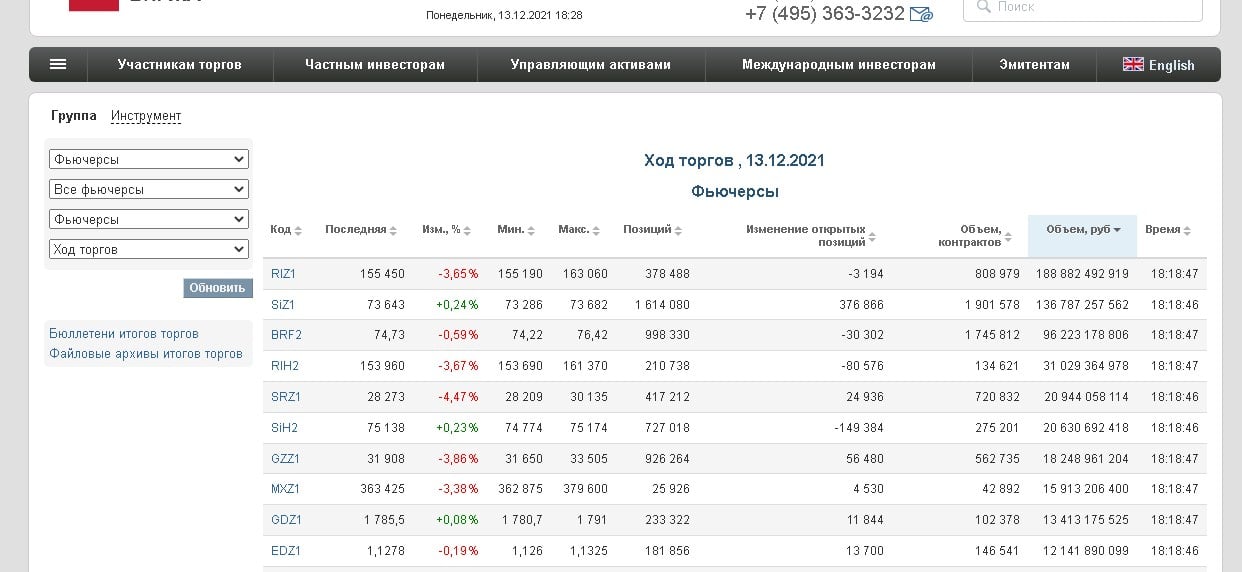
 People’s portfolio for November 2021 from the Infographics section of the Moscow Exchange (https://www.moex.com/s2184) The following sections are presented on the site:
People’s portfolio for November 2021 from the Infographics section of the Moscow Exchange (https://www.moex.com/s2184) The following sections are presented on the site:
- currencies (currency market),
- stocks and bonds (stock market),
- futures and options (terms market),
- commodity market,
- money market (REPO, lending rates, etc.).
The last two markets are used mainly by legal entities. These are trading sections, each of which has its own regulations, mode and trading schedule.
Access to such a wide range of instruments through one platform is a distinctive feature of the Moscow Exchange. Other world exchanges most often specialize in individual instruments.
Schedule of the Moscow Exchange 2021-2022
The working days of the Moscow Exchange – the days on which trading and settlements are held – usually coincide with the working days of the Russian Federation: Mon-Fri, with the exception of public holidays. Working hours depend on the trading section. As for the holidays, the site always publishes its schedule taking into account the holidays. The trading calendar of the Moscow Exchange is located in the “Private investors” section (
https://www.moex.com/msn/investor). In the section, you can select the stock, currency or derivatives market. Weekends are marked in red. When you hover over dates with an asterisk, you can see the details. On some holidays, auctions are held, but settlements are not carried out. This information may be important for urgent withdrawals or account closures as it will affect the available closing or withdrawal date. 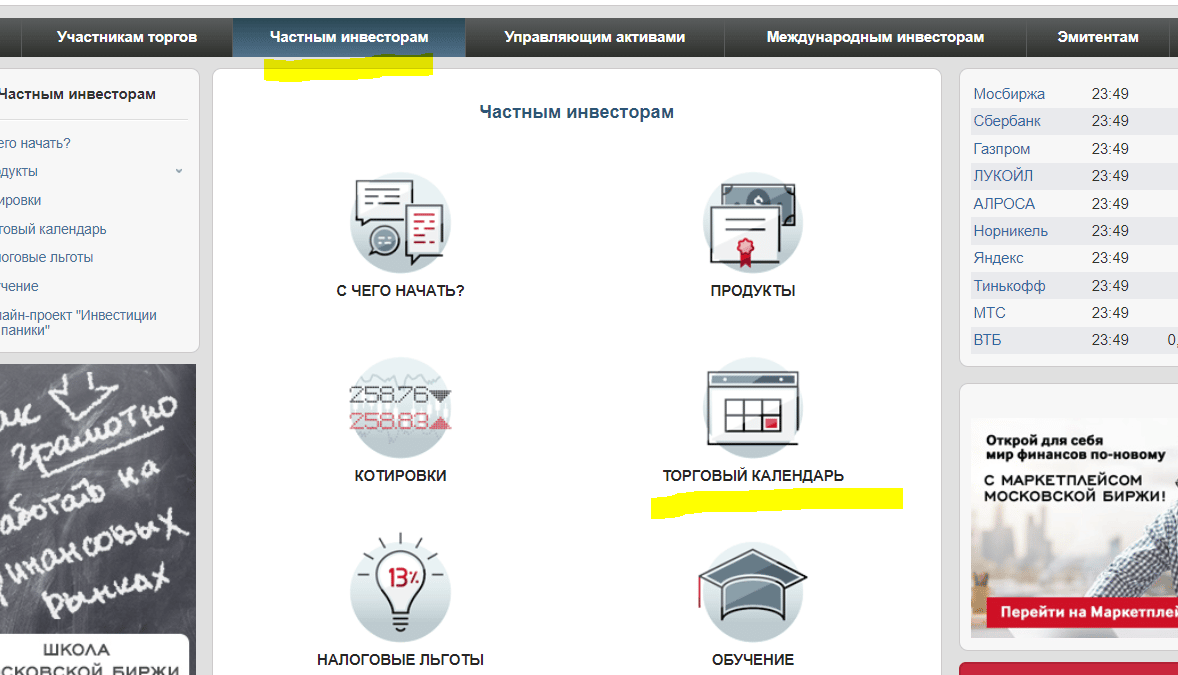
Non-working days of the Moscow Exchange in 2021 and 2022
In the outgoing 2021, according to the schedule of the Moscow Exchange, December 31 will be a non-trading day. According to the schedule of the Moscow Exchange in 2022, the following days will be non-trading in the stock section:
- for Russian securities : January 7, February 23, March 8, May 2 and 9, November 4;
- for American shares and depositary receipts (-RM): January 17 (Martin Luther King, Jr. Day), February 21 (Washington’s Birthday), March 5 (this is Saturday, but there will be trading on Russian securities, since this is an all-Russian working Saturday) , April 15 (Good Friday), May 2 and 30 (Memorial Day), July 4 ((Independence Day), September 5 (Labor Day), November 24 (Thanksgiving Day), December 26 (Christmas Day).
You can print the trading calendar of the Moscow Exchange from its official website from the presentation: https://fs.moex.com/f/15368/2022-01-01-torgovyy-kalendar-akcii-rus.pdf.
When stocks, mutual funds / ETFs and bonds are traded on the Moscow Exchange
There are currently three trading sessions: morning, main and evening. During the main trading session from 10:00 to 18:45 all stocks, funds and bonds are traded. The morning additional session lasts from 06:50 to 09:50 Moscow time. Evening additional session runs from 19:00 to 23:50. In the intervals from 9:50 to 10:00, as well as from 18:45 to 19:00, the exchange goes on a break. When trading through the applications of some brokers, due to these interruptions, previously placed limit orders fly off. During these additional sessions, the most liquid stocks from the special lists and some bonds and funds are traded. List of securities admitted to trading in additional sessions:
- In the morning: https://fs.moex.com/f/15590/spisok-bumag-k-dopusku-v-uds.xlsx.
- In the evening: https://www.moex.com/msn/stock-instruments#/?evening=’1′.
The Moscow Exchange launched trading in the morning session on the stock market only in December 2021. In honor of this, she also held a competition for the first participants of the morning session.
When and how futures are traded on the Moscow Exchange
Trades on the futures market are held from 7:00 to 23:50. There are two breaks for settlements: from 14:00 to 14:05 intermediate clearing takes place, and from 18:45 to 19:00/19:05 main clearing takes place. Clearing is a break for settlements and summing up. Unlike the stock market, according to stock exchange rules, futures are settled daily, twice a day. The interval before the first clearing is called the morning session, after it – the afternoon session. Together they make up the main session. After the evening clearing, the evening session begins. It is part of the next trading day. The result of transactions made in the evening will be taken into account in the daily clearing of the next trading day. The exchange accrues or writes off the variation margin (financial result) for clearing, depending on the settlement price of the futures at the time of clearing or transaction.
Such a wide time interval of access to trading allows traders to catch the trading activity of the Asian, European, and American markets. This is also one of the features of the Moscow Exchange.
Moscow Exchange website and trading on the online platform
The Moscow Exchange has its own official website with wide functionality: moex.com (Eng. Moscow Exchange). Direct trading through the website of the Moscow Exchange itself will not work – only through a broker.
Exchanges do not provide access to trading to private investors directly. They cooperate only with professional market participants (brokers, management companies, dealers, etc.). Thanks to this, the exchange can control the security of transactions – it knows each of its partners “by sight”. And he knows that he is able to ensure obligations on his part.
You can be sure that with any offer to invest directly on the exchange, without intermediaries, with any calls to an ordinary person allegedly from the exchange, we are talking about scammers.
 The exchange publishes a list of those brokers that act as its partners. It is in the section with these professional participants that the user will get if he clicks on the “Open an account on the exchange” button on any page of the site. But access to trading on the Moscow Exchange is provided by all brokers recognized by the Central Bank of the Russian Federation and licensed to conduct brokerage activities – not only partners.
The exchange publishes a list of those brokers that act as its partners. It is in the section with these professional participants that the user will get if he clicks on the “Open an account on the exchange” button on any page of the site. But access to trading on the Moscow Exchange is provided by all brokers recognized by the Central Bank of the Russian Federation and licensed to conduct brokerage activities – not only partners.
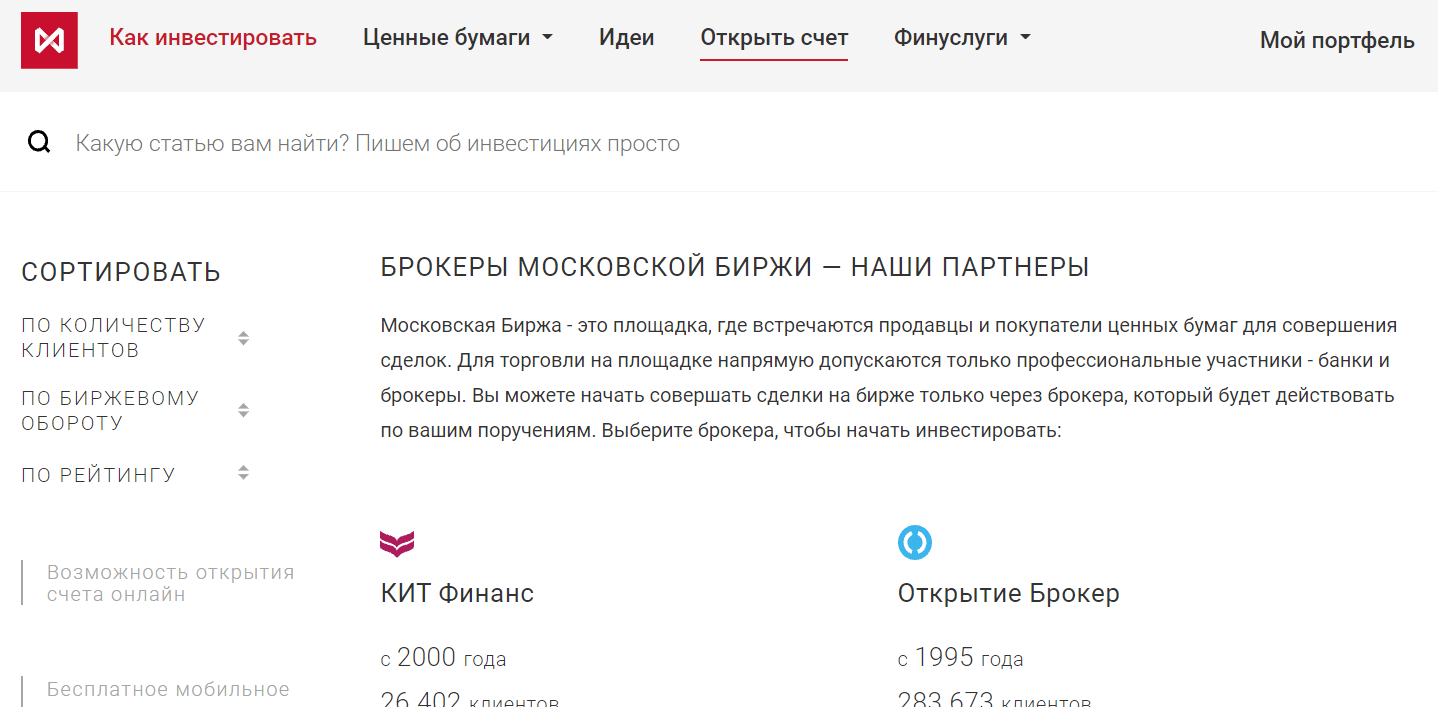 In the “Marketplace” section (https://place.moex.com/) you can apply for opening a real brokerage account online. In this case, the account will be opened with the broker “Opening Broker”. You will need a passport photo (a photo on your phone will do), TIN and SNILS numbers.
In the “Marketplace” section (https://place.moex.com/) you can apply for opening a real brokerage account online. In this case, the account will be opened with the broker “Opening Broker”. You will need a passport photo (a photo on your phone will do), TIN and SNILS numbers.
Demo account “My Portfolio”
By clicking the “My Portfolio” button through the website of the Moscow Exchange, you can try investing using a virtual demo account. 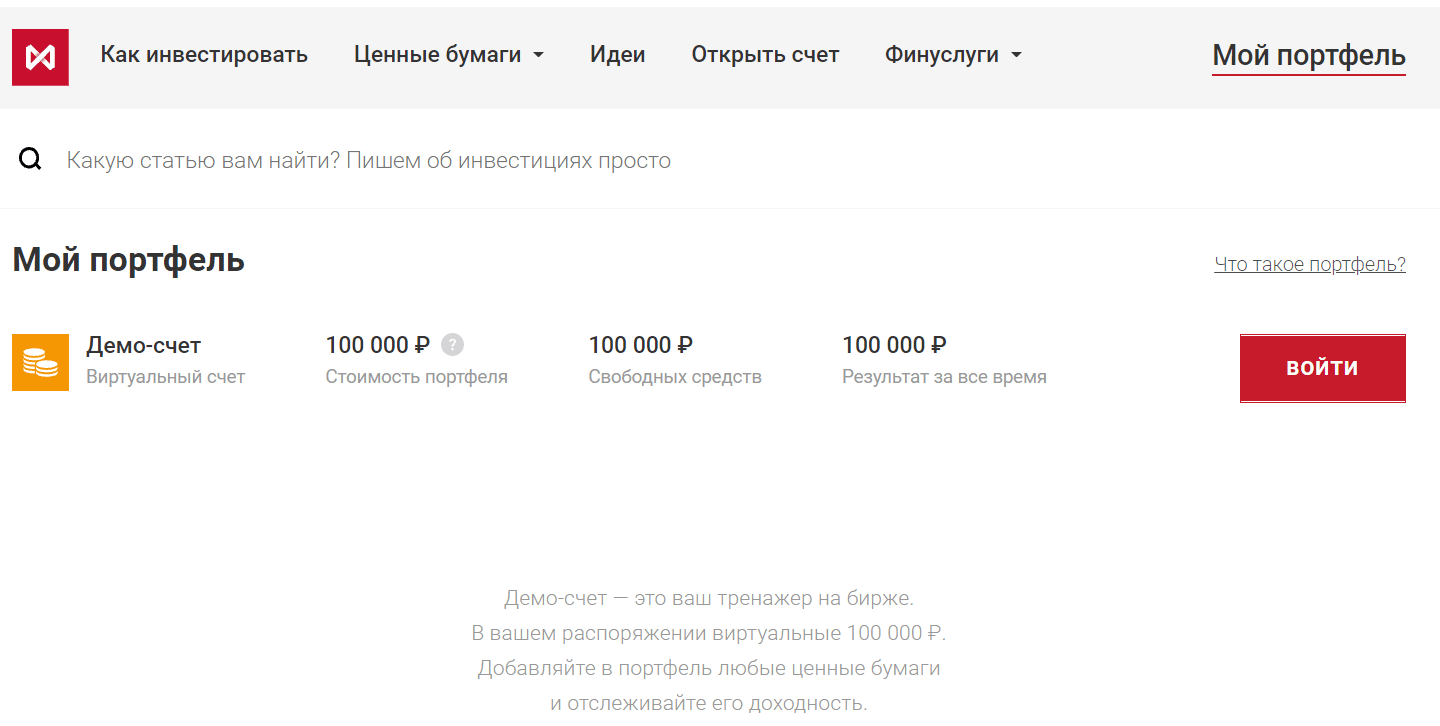
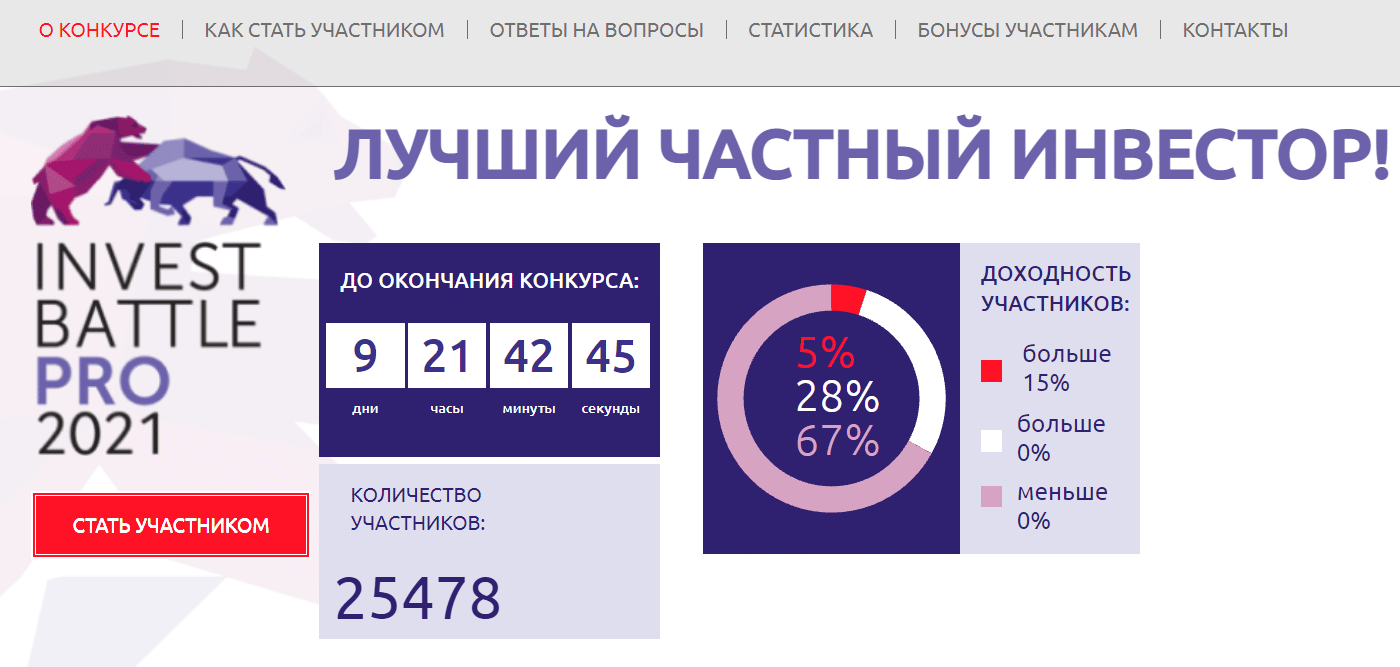
Training on the website of the Moscow Exchange

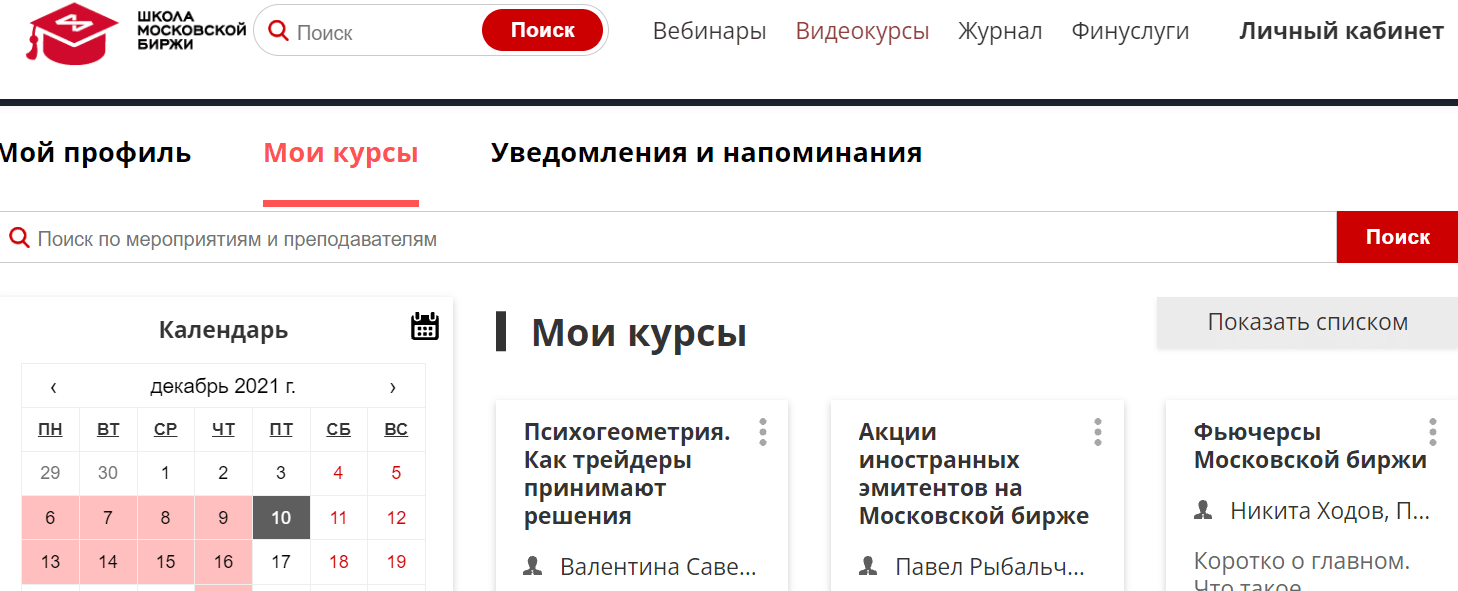 There are also series of lectures from practicing traders about
There are also series of lectures from practicing traders about
algorithmic tradingon signals with analysis of the main indicators. Questions can be asked at these events. Classes are held frequently, recording is ongoing, so the active audience is not too large, so the lecturer answers all the questions of the participants. Training is available in the Moscow Exchange School section.
Information on assets on the Moscow Exchange website
Information about events with assets traded on the Moscow Exchange first appears on the Moscow Exchange website, and then broadcast by brokers on their services. When broker support is silent, the ability to use the exchange website will be useful if you need to quickly make an investment decision. Although brokers usually publish summaries of securities and their main parameters on their own resources, they take data from primary sources. Using the search bar in the upper right corner of the site, you can go to any asset if you enter its name. Thus, conveniently and often faster than with a broker, you can find out:
- latest news, including the suspension of trading in paper,
- the date of the initial placement, taking into account the latest changes and postponements,
- a complete list of parameters for securities, including such details that are important, but not always available to the broker: the date of closing the register of bondholders, the settlement price of the futures contract at the last clearing.
For example, the Tinkoff broker so far only publishes information about the date of coupon payment, but not about the date of purchase of the bond in order to fall under this payment (as opposed to the date for dividends). Also, while Tinkoff does not have information about the price of the futures in the last clearing, namely, from this price, the variation margin is accrued or written off. Without knowing this figure, it will not be possible to understand exactly why the amount of the variation margin was exactly that, but the settlement price is considered according to a special formula of the Moscow Exchange.
On the page with the asset, the MOEX exchange publishes: trading events and daily parameters, chart, asset parameters, documentation. There is also a paid part of the functionality with more professional information. 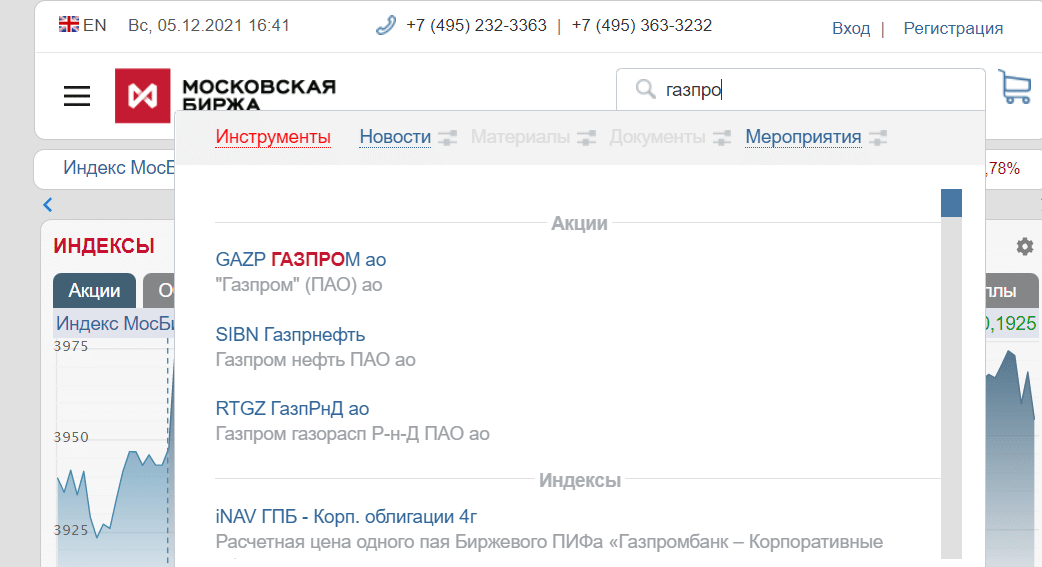
Currencies, the dollar exchange rate and the euro exchange rate online within the framework of the Moscow Exchange
The exchange rate of the Moscow Exchange is the same stock exchange rate that brokers boast in their commercials. “Buy currency profitably”, “we are not a bank”. All these are ways to inform that the services are available for buying dollars, euros and other currencies at the exchange rate – at the rate of the Moscow Exchange. The stock exchange rate is always more profitable than the bank rate. 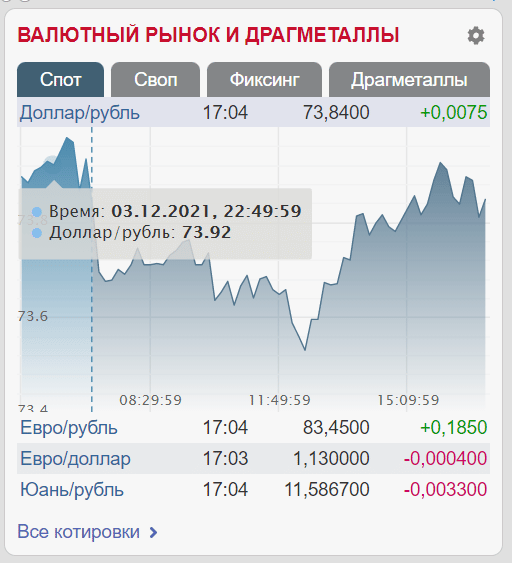
The exchange rate of the dollar and other currencies is determined by the ratio of supply and demand, changing every second. Currencies are very liquid throughout the day.
You can buy and sell currency on the Moscow Exchange on weekdays from 07:00 to 23:50. The main information about exchange rates is published by the exchange on the first page of the site in the center. For details, you can click on the “All quotes” button. The current exchange rates on the Moscow Exchange charts can be viewed at the link https://www.moex.com/en/markets/currency/: 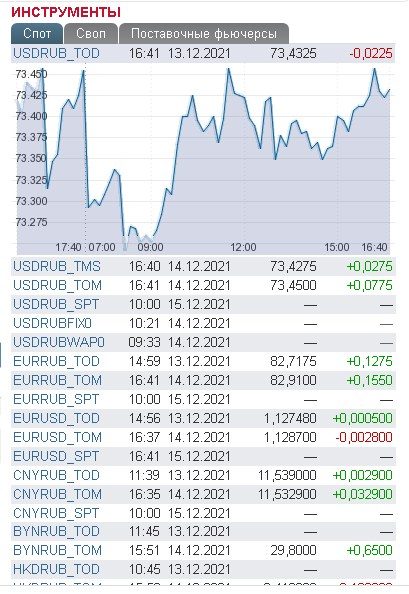
Shares on the Moscow exchange
On the page of each stock, the Moscow Exchange publishes at the top: information on trading today. A little lower – the asset chart is published with the ability to choose the type of chart: candlestick or linear. You can also select intervals: at least 1 minute, maximum – a quarter. [caption id="attachment_1870" align="aligncenter" width="1118"]
 Gazprom The page contains all the basic trading information. The minimum and maximum prices, the price of the last transaction, and the volume of transactions are published. In this case, you can select the date for which you want to download the information. Shares of the Moscow Exchange (MOEX), is it worth buying: https://youtu.be/JhXZI4R8Nac Below are all the key parameters of the paper, ISIN. You can go to the section with the issuer’s documentation. There is a “Download Results” button, but it redirects to a paid subscription.
Gazprom The page contains all the basic trading information. The minimum and maximum prices, the price of the last transaction, and the volume of transactions are published. In this case, you can select the date for which you want to download the information. Shares of the Moscow Exchange (MOEX), is it worth buying: https://youtu.be/JhXZI4R8Nac Below are all the key parameters of the paper, ISIN. You can go to the section with the issuer’s documentation. There is a “Download Results” button, but it redirects to a paid subscription. 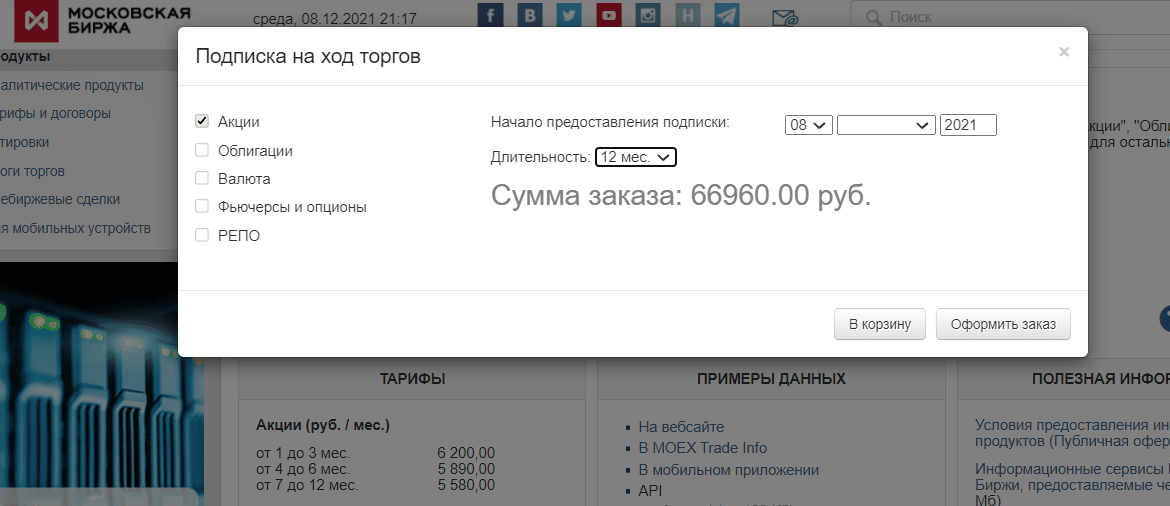
Bonds
The conservative investor’s favorite tool is government bonds (OFZ, regional), as well as corporate bonds of Russian companies, which are also placed and traded on the Moscow Exchange. In the tab with any bond, you can see the key parameters: yield, maturity date, coupon and coupon payment date. 
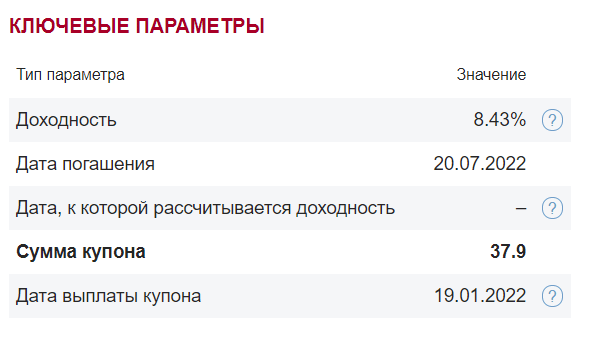
Futures
On the page of any futures, you can view all its main parameters and contract documentation. One of the main conveniences is that using the Moscow Exchange website, you can check the settlement price of a futures contract at the time of the last clearing. This is convenient for you to independently clarify why the amount of the incoming or written off variation margin – brokers do not always provide this information or take time to check the situation. Since the settlement price is calculated according to the special formula of the Moscow Exchange, it may not coincide with the market value of the futures at the time of clearing.
Mutual Funds and Strategies
There is a subsection on the Moscow Exchange website that allows you to see all mutual funds available on the site and the strategies of the Management Companies. For each item, the underlying asset, currency, format (BPIF or ETF), ticker are indicated. For some, an extended presentation of the fund is available. Information is in the section “Markets” – “Stock market” – “Tools” – “Exchange-traded funds”. A wide range of functions for selecting a trust management strategy is available on the Trust Management website section (https://du.moex.com/). On the product showcase, you can sort offers by profitability, investment amount, investment period, risk, currency and investment object.
 Trust management strategies [/ caption] Thus, the Moscow Exchange is an organization thanks to which brokers, and through them investors, have access to stable trading and a variety of assets. Its peculiarity is in a wide range of instruments: from conservative OFZs to risky options. The trading schedule allows the Russian investor to participate in the trading activity of Asians, Europeans, and Americans. The site has a convenient and functional website, investor-oriented services. And, of course, competitions are interesting.
Trust management strategies [/ caption] Thus, the Moscow Exchange is an organization thanks to which brokers, and through them investors, have access to stable trading and a variety of assets. Its peculiarity is in a wide range of instruments: from conservative OFZs to risky options. The trading schedule allows the Russian investor to participate in the trading activity of Asians, Europeans, and Americans. The site has a convenient and functional website, investor-oriented services. And, of course, competitions are interesting.

